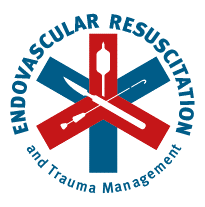
The Fine Art of the Fakir
The wetter you get, the faster I come.
Anonymous Plumber
Over the last 15-20 years a lot has changed with regards to the care of vascular injuries. As diagnostics has evolved, operative open exploration as a diagnostic test for a suspected injury has become less common. Today we have the possibility to perform high-quality CT imaging and angiography for better identification which has allowed us to become more conservative in our open surgical treatment strategy. In parallel to this, in the field of vascular surgery, we have seen an evolution of endovascular techniques that when combined with improved imaging has allowed for the expansion of potential indications. Vascular surgeons have since the early 90’s been using stent grafts and embolization to treat ruptured aortic aneurysms while inflating balloons in the aorta to stabilize the patients hemodynamically. Today, endovascular treatment of ruptured aortic aneurysms has become the gold standard in many centers around the world and we know that it is possible to treat all ruptured abdominal aortic aneurysms using endovascular methods, even though the majority of patients are hemodynamically unstable. This has stimulated an expanded use of endovascular techniques outside its traditional boundaries.
As a result of this, the vascular department at Örebro University Hospital, Sweden, has been a pioneer in implementing endovascular techniques and tools for resuscitation and definitive treatment of both bleeding trauma and non-trauma patients. From this, the EndoVascular resuscitation and Trauma Management (EVTM) concept has developed, aiming to combine modern endovascular techniques and procedures with traditional Advanced Trauma Life Support (ATLS) and Definitive Surgical Trauma Care (DSTC) for early multidisciplinary evaluation, resuscitation, and definitive management of hemodynamically unstable patients. The EVTM concept does not replace traditional open surgery, but instead incorporates all available tools into a common trunk. It has been suggested that using the EVTM concept may result in faster bleeding control, minimized blood loss, and less extensive surgical insult. It may also help surgical teams to assemble the necessary resources and with improved endovascular devices (e.g. stent-grafts, embolization agents, balloon occlusion catheters) and diagnostic imaging techniques (e.g. Doppler, Computed Tomography (CT) or CT Angiography (CTA), ultrasound angiography), save precious time. EVTM is now part of clinical practice in an increasing number of trauma centers around the world and is also used in austere environments with limited resources to focus medical resources and attention on the appropriate needs of the patient.
When implementing EVTM at a center its foundation is, as with all endovascular procedures, the vascular access. This is often described as the critical, rate-limiting step, and is a prerequisite for a successful endovascular procedure. Apart from enabling the use of endovascular tools, it provides the possibility for invasive blood pressure monitoring, blood analysis, arterial fluid resuscitation, and medical therapy. By using the Seldinger technique either percutaneously using ultrasound or anatomical landmarks, or by surgical cut-down, early vascular access can be obtained early during the primary survey in the emergency room. For this reason, it has been suggested to add another A for early “Access” or C for “Circulation” to the traditional ABCDE strategy of ATLS. Placing a 4-5 French (FR) sheath early, before the patient deteriorates hemodynamically, allows easy upgrading to a larger sheath if hemodynamic instability develops and the use of endovascular procedures becomes necessary. If this occurs, Resuscitative Endovascular Balloon Occlusion of the Aorta (REBOA) might be a beneficial adjunct to aid in improving systolic blood pressure as well as cerebral and cardiac perfusion, minimizing bleeding distal to the balloon and gaining time for diagnosis and definitive management. If the hemodynamic status of the patient permits it is recommended to obtain a CTA, which can be done even during REBOA use. If clear injuries are identified and surgery is indicated the patient should be taken to a semi-hybrid or hybrid operating room. A semi-hybrid operating room consists of a sliding table (angiography surgical table) with a C-arm available. This permits the use of endovascular treatment options but it can also be used to, for example, perform further orthopedic diagnostics or verify chest tube placement and effect. The common goal, regardless if endovascular, open or hybrid techniques were used, is to stop the bleeding.

Apart from its practical and clinical aspects, EVTM is an organization with an established Society (EVTM Society) and an open-access medical journal (JEVTM – Journal of EndoVascular resuscitation and Trauma Management). The EVTM Society organizes yearly symposiums and workshops both in Örebro, Sweden, as well as around the world, with the next symposium being held in Örebro, Sweden between 17-19th of October 2024. Additionally, the society has published several textbooks and manuals describing the concept (Top Stent, EVTM Textbook, EVTM Landmark Articles) and EVTM is now also mentioned in several well-recognized manuals ex. the “DSTC manual” and “Vascular Injury, Endovascular and Open surgical management”. The development of an internal organization for young EVTM enthusiasts has also been established with EVTM-ST (Specialists in Training) organizing monthly digital case discussions with people from around the world, very appreciated events. Furthermore, EVTM has developed other educational channels on social media with, for example, a video archive of both open and endovascular procedures on YouTube.
EVTM is continuously developing, and with these final words, I would like to encourage everyone to get involved. We believe in our motto “No ego, just good science, care and collaboration” and together we can help each other to develop this exciting field of medicine and care for our patients.
References
1. McGreevy DT, et al. A 12-year experience of endovascular repair for ruptured abdominal aortic aneurysms in all patients. J Vasc Surg 2023;77:741-9.
2. Horer TM, et al. Endovascular Resuscitation and Trauma Management (EVTM) – Practical Aspects and Implementation. Shock 2021;56:37-41.
How to Cite This Post
McGreevy DT, Marrano E, Bellio G. The Fine Art of the Fakir. Surgical Pizza. Published on January 6, 2024. Accessed on July 27, 2025. Available at [https://surgicalpizza.org/trauma/the-fine-art-of-the-fakir/].





2 Comments
Pingback:
Pingback: